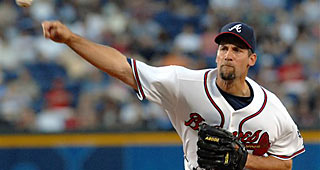By David Biderman
Haven?t pitchers figured it out yet?
Hitters may catch on; they can hit small balls moving at them and by them at 90-plus miles per hour. Pitchers, however, can?t seem to grasp the idea.
Tommy John surgery is no longer a death-sentence.
It?s become a means of strengthening a pitcher?s elbow while improving his longevity. The surgery takes a year from a player?s career, but health insurance takes money out of everyone?s pockets, and nobody complains (much) about that.
Do you want to save some money every year and have no medical treatment, or would you rather be safe than sorry?
Tommy John surgery presents the same predicament.
Why wait and see if you?re going to have problems? Why not move the roadblock instead of eventually crash into it?
The surgery Dr. Frank Jobe invented more than thirty years ago now has a success rate hovering around 95 percent, and rehab can begin about two months post-surgery.
Pitchers who have gone under the knife are normally 100 percent one year after leaving the hospital, and often return to the mound with higher velocity than they left with.
So the sixty-four million dollar question ? or, nowadays, 100-plus million dollar question for All-Star pitchers ? is when should the surgery be done?
Teams don?t delay the procedure like in the past, waiting for the elbow ? the ulnar collateral ligament to be exact ? to snap as sharp as the breaking ball being thrown, but clubs still see the process as a last resort.
Which makes no sense.
Look at the rash of young pitchers being threatened by the surgery, or those who?ve already had it.
Atlanta?s Mike Hampton was a sure thing, but doctors ignored signs of ligament damage and waited too long to finally send the pitcher to the operating room. He hasn?t been healthy for several years.
The Cubs? hurlers have etched their names in the Tommy John history books. Kerry Wood went through a season of too many pitches before the Cubs finally bit the bullet. Thanks to their waiting, however, Wood will never be able to pitch like he did in his rookie year. Mark Prior refuses to go under the knife and his career has been killed because of it.
And it?s not like older players provide the only good examples.
Minnesota stud Francisco Liriano tore up the first half of last season, only to go under the knife and miss the end of the year. But because the Twins opted for surgery right away, Liriano is expected to return next season as good as new.
Seattle?s king, Felix Hernandez, is already getting the dreaded ?sore fore-arm? designation that normally leads to surgery. The only remaining question is whether or not the Mariners opt for the procedure before the injuries start piling up.
Dewon Brazelton even had the surgery done while in high school and went on to become the third overall player selected in the 2001 MLB Draft.
It has become a matter of ?now or later? instead of ?should we or shouldn?t we.?
Maybe down the line high-school pitchers showing promise will get Tommy John surgery as a precaution. Those kids will then have a year off to study the intricacies of the game before either joining a professional team or stepping to the college ranks.
Surgery that early may seem like an over-reaction as well as a huge gamble, but MLB teams spend millions of dollars on immature, untested teenagers every year.
One more risk likely won?t be one too many.
In a time when pitching is at a premium, and money is flying around like knuckleballs on steroids, it?s a good time to start fixing ten-figure arms before they begin breaking.



